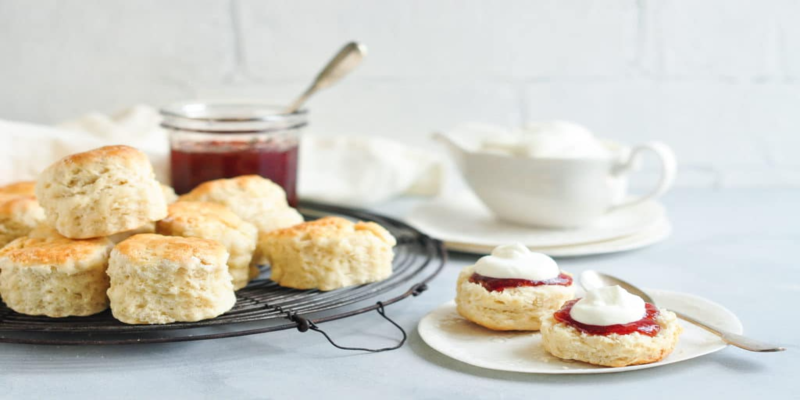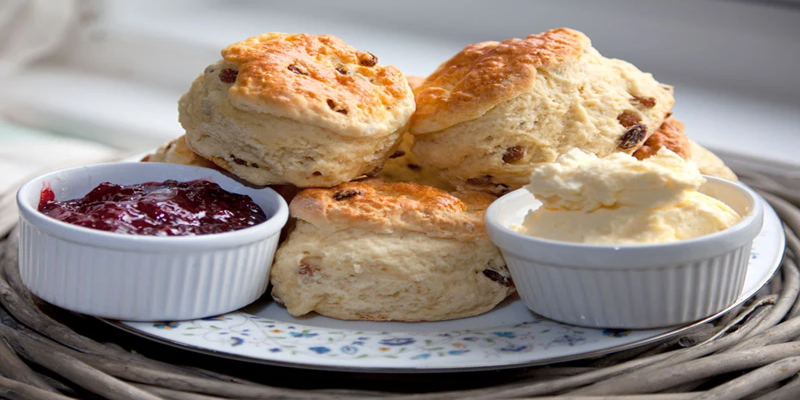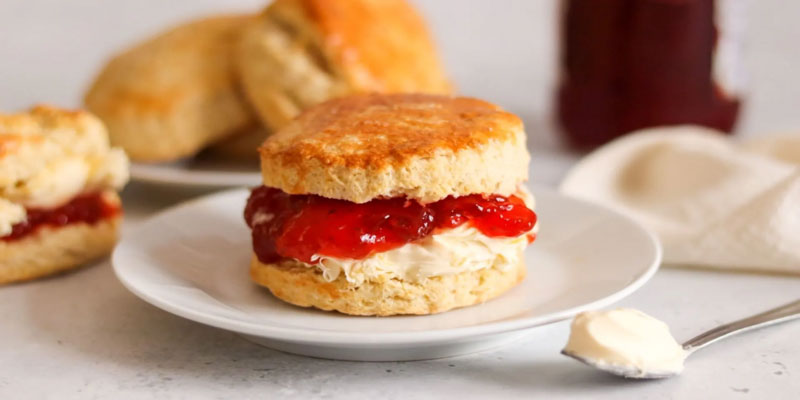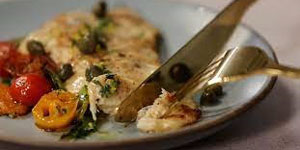June 25th is National Cream Tea Day, the most delightful day of the year. A scone with some jam and clotted cream is the best dessert ever. However, the Great British Scone Debate is inextricably linked to the scone itself.
It's not a question whether you say "sc-own" or "sc-on." We're referring to the age-old debate over whether or not cream should go on a scone first, followed by a jam. Do you like the cream on top of the jam, or does it matter which order you use?
You might find advantages and disadvantages to both approaches. It's National Cream Tea Day, so we're going to end the debate by providing a foolproof scone recipe that the whole family will love.
Traditions Preceding the Present-Day Cream Tea

The origins of the sophisticated Cream Tea we enjoy today may be traced back to the eleventh century. Tavistock monks in Devon, England, fed homemade bread, jam, and clotted cream to local laborers.
Much later, in the 19th century, the new railways began bringing enthusiastic vacationers to Devon and neighboring Cornwall in search of sunshine and tearooms. And that's how modern cream tea was created. Scones, jam, cream, and tea are the four cornerstones of a classic Cream Tea, whether Devonshire or Cornish. Instead of using a knife to cut it in half, try twisting it slightly.
The standard calls for strawberry jam and clotted cream. Can you explain what clotted cream is? That's a valid concern, as it's not something most people have encountered outside the United Kingdom.
To make clotted cream, slowly boil unpasteurized milk and let it chill in the refrigerator overnight. Bringing the fat percentage up to roughly 63% causes the cream content to rise to the surface, generating "clouts," or clots, that make a lovely golden crust on top.
Taking Sides: Cornwall vs. Devon
Jam supposedly overpowers the flavor of clotted cream if applied in the other direction. Thus the traditional Cornish approach is to split the scone in half, spread the jam, and then add a tablespoon of clotted cream. On the other hand, in Devonshire, they cut the scone in half and spread clotted cream and jam on both halves. The reasoning for this order is that cream, like butter, is a dairy product, so it makes sense for the cream to be added first.
Which Is Correct, Then?
We at The Consumer Brand believe you should be free to enjoy good cuisine in whatever way you see fit. A large majority of the country appears to be on Team Cornwall's side.
According to a poll of over 2,000 individuals, the majority (76%) of people share the Queen's preference for spreading jam on their scones before dousing them with cream.
The Five Most Important Rules of Conduct During A Cream Tea
- Accompany freshly made tea. Use loose leaves rather than tea bags to get the most out of your tea. It would be best if you let the tea a few minutes to steep before pouring. Because the tea will concentrate while it steeps, it's a good idea to have some hot water ready to add to the pot as needed.
- The person situated east of the pot should pour; thus, if you do not like to pour, you should select to sit further away from the pot.
- Pour the tea into the cup and let others add milk and sugar as they like.
- After mixing your tea, transfer the spoon to your sauce.
- When you drink, don't lift your little finger. Use your index and thumb to grasp the cup's handle and your little finger to rest under the rim for stability.
It Depends On You

Do you favor the modern take on the Cream Tea or the classic? It is irrelevant to a certain extent as long as you are having fun. Whether you like the jam or the cream, it's your call to go first. As a matter of fact, why not book a High Tea Experience with us and have a delightful, leisurely time picking which you prefer?
We have a secret recipe for plain and fruit scones, and our High Tea Parlor is the ideal place to sample. You may also think about getting one of our deluxe baskets to help you decide while you're at home or to give as a present to someone special.



